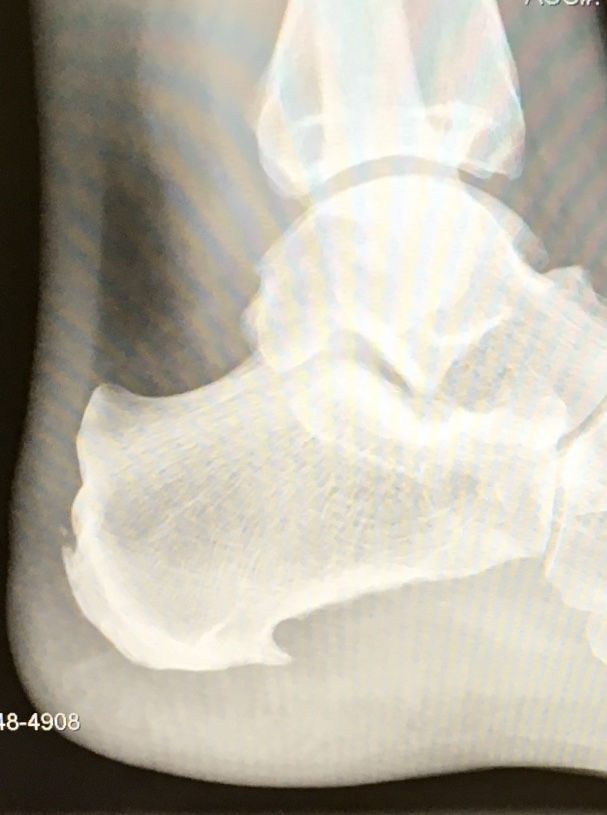
“Insertional Achilles’ debridement with FHL transfer” to remove the embedded bone spurs - successful!
Basically, this procedure is a complete detachment of the Achilles’ tendon, removing the bone spurs, and scraping the extra bone and calcification from the heel bone. Then the Flexus Hallucis Longus (FHL) tendon leading to the big toe, is cut and a hole is drilled into the heel bone, where the FHL is inserted and secured. The transfer of this tendon is used for strengthening and augmenting the repair. The FHL tendon also provides additional blood supply to speed the recovery.
Once the FHL tendon transfer is complete, several more holes are drilled into the heel bone. Special bio-absorbable inserts are hammered into the holes. These inserts use Arthrex repair thread to hold the Achilles’ tendon in place. After the inserts are in place, the Arthrex thread is used to tie the Achilles’ tendon back to the heel bone. Once all of the debris is removed and the tendons are secured, the final step is to flush and close the surgical area and place the foot in a cast or splint.

The doctor told me that I’ll be in the cast for about six weeks with no weight-bearing activity, followed by a soft cast or CAM boot for an additional six to eight weeks.
Pool running is possible about 16 weeks post-op and a return to light or moderate jogging after six months.
I’m confident of this type of repair because of the high success rate. They use this type of repair for professional basketball players who have ruptured Achilles’ tendon injuries.
Feeling good and can’t wait to run pain-free again in eight or nine months. 😊
